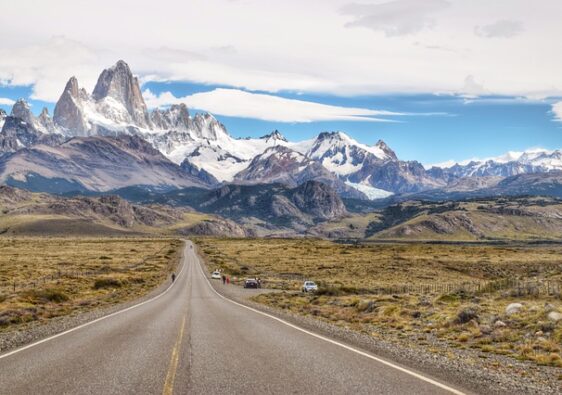Half-a-day before flying, I used to look at the empty insides of my backpack and feel a sort of writer’s block. I guess I was scared by the awful consequences of my wrong decisions: broken back vs. missing essentials. The longer the trip, the bigger the doubt. Nowadays, I’m a grown-up man and I know how to pack for long-term travel. It’s called ‘minimalism’ (and a persistent faith in the rules of the worldwide market). I therefore keep my packing list to a minimum and if I end up needing something on my long-term travel, I just buy it there and then.
I don’t mean to diss, but when I look up ‘long-term travel packing lists’ online and see a gigantic list of tech and gadgets and miscellanea, I’m flabbergasted.
Of course, we don’t all travel the same; I know there are different types of travellers. But when we embark on a long-time trip, some sort of minimalism is welcome. For our back’s or arms’ sake if nothing else.
So here’s a list of what I consider the real minimalist packing list for long-term travel; for any travel, as a matter of fact. And believe me, I’ve tried to include everything, even the stuff I usually forget to pack. You’ll probably look at it and think “oh but Anthony, that’s missing, and I absolutely need that!”. Well, I know from experience that this is all I need before taking the plane and jumping into the unknown.
Jump to:
Documents | Travel essentials | Cosmetics | Clothes | Non essentials | Luggage | Apps
This long-term packing list contains affiliate links. We’re not selling anything ourselves – we just help products we find great. If you click one of them and decide to purchase, it’ll be at no extra cost to you; and we’ll get a trifle that’ll help us bring you more awesome travel guides. P.S.: We do not support Amazon.

Considerations before you pack
Who are we? Where are we going? Why are we here? Cogito ergo sum... Those existentialists questions should remain in your head at the time of packing for your long-term travel. Since a trip differs from another, there are indeed several considerations that might influence the way you pack. I call it the ATA rule because acronyms are cool.
Area
Where are you travelling to? What will the weather be like in that season? Will you move a lot or settle down in a handful of places?
Type of travel
Do you plan on hiking a lot or do sports in general? Will you spend time outdoor (in the sea, the snow…)? Will you go party or attend fancy places, help on a social project?
Activities
Will you need special gear for a particular activity? Climbing, skiing, deep-sea diving, photography, etc.
Travel documents
Let’s start with the red tape. These documents are either indispensable for your trip or will make bureaucracy much easier. In our digital age, it’s easy to keep all your important docs on the cloud and easily accessible from your phone. But we do recommend you keep at least one hard copy of each document, Justin Case.
Passport – it’s a good idea to take a photo and keep it on your phone/on the cloud. Plus one hard copy in a secure pocket.
Proof of COVID vaccination – or recovery. Careful, some countries also require a negative PCR test.
International driver’s license
Visas – for this too, we advise you store a photocopy and a digital copy that’s accessible from your phone.
Return ticket / Proof of onward travel
Some countries require one of those, Brazil for example. If you fail to show such documentation, they won’t let you in the country.
Spare pass photos
Can be very handy in case you need to apply for visas while you’re on the road.
Travel insurance
This wouldn’t be (yet another) ultimate packing list without a good travel insurance. Among the multifarious options that exist to fit your need, we recommend World Nomads. They probably offer the best guarantee for an affordable price. Whichever insurance you choose, make sure you have both a hard-copy and a digital document at hand for when the necessity arises.
Long-term travel essentials
Waist bag
At first I thought it looked too 90’s, but then I grew fond of my flat, square, inconspicuous fanny pack. In insecure areas, I tuck it under my clothes. I really couldn’t travel without it now.
It’s perfect to keep safe and at hand your documents, money, keys, museum tickets and the address of that local restaurant you scrambled on a paper serviette. It truly replaces any more expensive anti-theft belted wallet.

Chargers
Sunglasses
Multi-tool pocket knife – you have no idea yet how often you will use it on your long-term travel.
Lighter
Packing cubes – although we use plastic bags that work just fine and can easily be replaced. They keep together underwear and small items that would otherwise get lost in your luggage.
Reusable kit – foldable shopping bag + water bottle (preferably with a built-in filter) + drinking cup.
Travel towel – it’s not just a hype. They take less space, remove the water better and dry extra fast. Little minus though: they tend to stink a bit after a few uses.
Emergency 1st aid kit – and malaria tablets if you travel to a risk destination.

Small lock – small and handy. Although I don’t use one myself since many accommodations provide a locker/I leave nothing of value.
Toilet paper (or tissues) – remove the cardboard tube to gain space. Can be easily restacked.
In your beauty case
The case that carries your cosmetics is important: it shouldn’t be bulkier than necessary and should dry fast. I often store my small items in that case so they don’t get lost in my bag or aren’t too easily accessible in an outer pocket.
Shampoo and shower gel – preferably in travel-size bottles so you can fly with carry-on only if necessary. Truth be told, there are many occasions to refill those during a long-term trip.
Toothbrush (and toothpaste) – preferably bamboo to get away from plastic. We do recommend to use a toothbrush cover.
Comb / brush
Nail clippers
Tweezers – do NOT underestimate the power of a good pair of tweezers. Plus they take up virtually no space. My multi-tool knife has some.
Menstrual cup – and a Shewee for those long hiking days.
Deodorant
Hand sanitiser
Travel laundry detergent – not all accommodations offer laundry service. Or you might want to quickly wash those smelly socks in the hotel sink, don’t you?

Travel clothes
Will the weather be cold, hot, rainy? Is there a risk that I sweat or freeze to death? Will I want to go out and look fancy?
This is where mistakes arise and can have consequences on your trip. You probably won’t end up at the hospital because you carried too many jumpers. But the weight will tire you out and you might cut the travel short because of that. Therefore:
- bring a limited number of items that match well with each other and are multi-functional;
- pack enough clothes for one week and wash regularly (bring a little more underwear as they take up little space);
- on the contrary to a short holiday where you can go crazy, only pack items you are sure you’ll use. In doubt, just leave it home;
- roll your clothes instead of folding them, even in a suitcase. It truly saves space and minimises wrinkles.
Short-sleeve tops (and or tank tops) x5
Long-sleeve tops x2
Fleece jacket x1

Trousers x2
Hiking trousers x2
Shorts (and/or skirts, dresses) x2
Swimming suit x1
Socks + underwear x9
Lightweight rain jacket
Winter hat + scarf + maybe gloves – if you’re travelling to cold climates or might spend a night in a tent or on a bus.
Head scarf (aka head buff) – this one’s a truly multifunctional item. It can be used as a scarf, a hat or a headband. Therefore it’s good in both cold and hot weather to protect from wind, sun or even rain.
Comfy sneakers or slip-ons – for your city walks.
Sturdy hiking shoes
They sure take up space and add weight but if you plan on hiking, they’re a must. Of course, if you’re not sure you’ll be hiking, think twice. We wear them on travel days so we don’t have to carry them, and then take them off on the bus, train or plane.
We like comfy hiking boots that cover the ankle; it’s also important that they are waterproof and have a sturdy sole.

Non essential travel gear
These few ‘non-essentials’ can quickly become ‘essentials’ depending on your type of trip. But if what you’re holding doesn’t appear in this list, it’s probably in the what not to pack section at the bottom and belongs in the drawer.
Camera – your smartphone camera will probably work just as fine. That’s unless you’re a dedicated travel blogger like those sweet people from Green Mochila 💚.
Yoga/sleeping mat
I don’t mean it’s important you keep practising your downward dog every day. A yoga mat will be your best friend if you end up sleeping on the floor eg. if you go camping or have to wait for an early bus at the station.
Tent
Read how we managed to go camping in Argentina even though we weren’t carrying a tent!
Luggage
Wait, now you know what stuff to take with you but have nothing to put it in? If, like us, you’re Team Backpack (booh Team Suitcase!), here are our top recommendations.
Favourite backpack
We’re in love with the Osprey 65-litre backpack. The support system is so good and it fits so well that we hardly feel the weight.
In general, for a long-term trip, aim for a backpack that’s between 55 and 65 litres. I can even tell you out of experience that many flights accept 60-litre bags as carry-ons, provided they’re not fully packed.
Favourite day pack
We want a day pack that is breathable, between 20-30 litres and has additional options to strap things outside too.
This 22-litre Deuter Speed Light for women (or its male counterpart that’s 2 litres bigger) seem like an ideal day pack: pockets on the side, pocket on the front and pockets even on the hip strap!
Apps
I’ve travelled extensively with an old-school Nokia and was very happy with it. So now I can tell you out of experience: these apps will make your long-term trips waaaay easier.
Google Maps
Good ol’ G-maps remains insuperable when it comes to finding a commerce in an unknown area: restaurant or bar, shop, bank, etc. Trick: search for a city when you’re online to automatically download its map; you’ll be able to check it again when you’re offline, albeit with less information.
Maps.me
For us the best app there is to find where you have to go. Works offline (you need to download the area map beforehand) and is incredibly precise. We recommend it particularly for paths and nature trails.
Booking / Air bnb / Couchsurfing / Hostelworld
We don’t recommend booking beforehand as accommodation is often cheaper on the spot. But these apps can at least give you a list of options with addresses. Among them, Booking is probably the most encompassing. Because we’re big supporters of hospitality networks, the Couchsurfing app saved us more than once.
Uber
Because public transportation isn’t reliable everywhere. Or because you arrive too late or too early. Or because the area is somewhat dodgy. Note: some countries have their own service, eg. 99 in Brazil.
Offline Translator
“How do you say ‘toilet’ in Vietnamese?” – you never know when that can come in handy.
What not to pack for a long trip
Put that thing back into the drawer, Johnny. Many items have no business in your luggage right from the start. Provided you end up needing them, they’re probably available and affordable wherever you’re at. Here are a few examples of things to remove from your long-term travel checklist.
International adapter
Many neighbouring countries use the same type of plugs. So why carry a bulky international adapter when a single one might have you covered. In South America for example, most countries (although not all!) accept a 220V / 50 Hz / C plug combination.
Besides the plug itself, you should check your devices’ voltage. The world runs in two voltage ranges: 110-127V or 220-240V. You run the risk of damaging your device if you plug it in the wrong voltage range. If your device mentions “Input: 110-240V” though, no voltage conversion is needed.Check the plug + voltage of your destination on the IEC website.
External hard drive
How long are you going to be on the road actually? Are there things you can not store on a cloud?
Sunscreen + Bug repellent
Although essential, these two are cheaper where you’ll need them. Plus, provided you don’t take the plane, you’ll be able to carry the normal-size bottles throughout your trip.
Make-up
Besides the fact that Anna wears close to no make-up, we’ve realised that, for the odd occasion, there was always someone we could ask for a touch of mascara or foundation.
Laundry bag
Unfortunately, shopkeepers in many countries still give away a thousand too many plastic bags. Fortunately, these work magic to store away your dirty socks.
Sewing kit
OK, they’re small and lightweight. But what are the odds you would actually take the time to darn those same dirty socks?
Expensive jewellery and unnecessary valuables
Is there a real, urgent need to risk losing any of those? If the answer is yes, be my guest.
And also
A coffee press, a hair dryer, a washing machine, a freaking commercial refrigerator.
★
Is there anything you would add or remove from this long trip packing list?
Tell us in the comments below!

